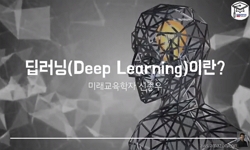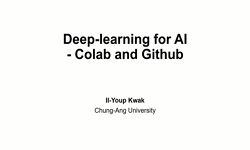Background: We described a novel multi-step retinal fundus image reading system for providing high-quality large data for machine learning algorithms, and assessed the grader variability in the large-scale dataset generated with this system. Methods: ...
http://chineseinput.net/에서 pinyin(병음)방식으로 중국어를 변환할 수 있습니다.
변환된 중국어를 복사하여 사용하시면 됩니다.
- 中文 을 입력하시려면 zhongwen을 입력하시고 space를누르시면됩니다.
- 北京 을 입력하시려면 beijing을 입력하시고 space를 누르시면 됩니다.




A Novel Fundus Image Reading Tool for Efficient Generation of a Multi-dimensional Categorical Image Database for Machine Learning Algorithm Training
한글로보기https://www.riss.kr/link?id=A105926607
- 저자
- 발행기관
- 학술지명
- 권호사항
-
발행연도
2018
-
작성언어
English
- 주제어
-
등재정보
KCI등재,SCI,SCIE,SCOPUS
-
자료형태
학술저널
-
수록면
1-12(12쪽)
-
KCI 피인용횟수
4
- 제공처
-
0
상세조회 -
0
다운로드
부가정보
다국어 초록 (Multilingual Abstract)
Background: We described a novel multi-step retinal fundus image reading system for providing high-quality large data for machine learning algorithms, and assessed the grader variability in the large-scale dataset generated with this system.
Methods: A 5-step retinal fundus image reading tool was developed that rates image quality, presence of abnormality, findings with location information, diagnoses, and clinical significance. Each image was evaluated by 3 different graders. Agreements among graders for each decision were evaluated.
Results: The 234,242 readings of 79,458 images were collected from 55 licensed ophthalmologists during 6 months. The 34,364 images were graded as abnormal by at-least one rater. Of these, all three raters agreed in 46.6% in abnormality, while 69.9% of the images were rated as abnormal by two or more raters. Agreement rate of at-least two raters on a certain finding was 26.7%–65.2%, and complete agreement rate of all-three raters was 5.7%–43.3%. As for diagnoses, agreement of at-least two raters was 35.6%–65.6%, and complete agreement rate was 11.0%–40.0%. Agreement of findings and diagnoses were higher when restricted to images with prior complete agreement on abnormality.
Retinal/glaucoma specialists showed higher agreements on findings and diagnoses of their corresponding subspecialties.
Conclusion: This novel reading tool for retinal fundus images generated a large-scale dataset with high level of information, which can be utilized in future development of machine learning-based algorithms for automated identification of abnormal conditions and clinical decision supporting system. These results emphasize the importance of addressing grader variability in algorithm developments.
참고문헌 (Reference)
1 Quellec G, "Optimal wavelet transform for the detection of microaneurysms in retina photographs" 27 (27): 1230-1241, 2008
2 Arunkumar R, "Multi-retinal disease classification by reduced deep learning features" 28 (28): 329-334, 2017
3 Choi JY, "Multi-categorical deep learning neural network to classify retinal images: a pilot study employing small database" 12 (12): e0187336-, 2017
4 Abràmoff MD, "Improved automated detection of diabetic retinopathy on a publicly available dataset through integration of deep learning" 57 (57): 5200-5206, 2016
5 Krause J, "Grader variability and the importance of reference standards for evaluating machine learning models for diabetic retinopathy" 125 (125): 1264-1272, 2018
6 Decencière E, "Feedback on a publicly distributed image database: the Messidor database" 33 (33): 231-234, 2014
7 Ting DS, "Development and validation of a deep learning system for diabetic retinopathy and related eye diseases using retinal images from multiethnic populations with diabetes" 318 (318): 2211-2223, 2017
8 Gulshan V, "Development and validation of a deep learning algorithm for detection of diabetic retinopathy in retinal fundus photographs" 316 (316): 2402-2410, 2016
9 Quellec G, "Deep image mining for diabetic retinopathy screening" 39 : 178-193, 2017
10 박성호, "Connecting Technological Innovation in Artificial Intelligence to Real-world Medical Practice through Rigorous Clinical Validation: What Peer-reviewed Medical Journals Could Do" 대한의학회 33 (33): 1-7, 2018
1 Quellec G, "Optimal wavelet transform for the detection of microaneurysms in retina photographs" 27 (27): 1230-1241, 2008
2 Arunkumar R, "Multi-retinal disease classification by reduced deep learning features" 28 (28): 329-334, 2017
3 Choi JY, "Multi-categorical deep learning neural network to classify retinal images: a pilot study employing small database" 12 (12): e0187336-, 2017
4 Abràmoff MD, "Improved automated detection of diabetic retinopathy on a publicly available dataset through integration of deep learning" 57 (57): 5200-5206, 2016
5 Krause J, "Grader variability and the importance of reference standards for evaluating machine learning models for diabetic retinopathy" 125 (125): 1264-1272, 2018
6 Decencière E, "Feedback on a publicly distributed image database: the Messidor database" 33 (33): 231-234, 2014
7 Ting DS, "Development and validation of a deep learning system for diabetic retinopathy and related eye diseases using retinal images from multiethnic populations with diabetes" 318 (318): 2211-2223, 2017
8 Gulshan V, "Development and validation of a deep learning algorithm for detection of diabetic retinopathy in retinal fundus photographs" 316 (316): 2402-2410, 2016
9 Quellec G, "Deep image mining for diabetic retinopathy screening" 39 : 178-193, 2017
10 박성호, "Connecting Technological Innovation in Artificial Intelligence to Real-world Medical Practice through Rigorous Clinical Validation: What Peer-reviewed Medical Journals Could Do" 대한의학회 33 (33): 1-7, 2018
11 Gargeya R, "Automated identification of diabetic retinopathy using deep learning" 124 (124): 7-962, 2017
12 Wong TY, "Artificial intelligence with deep learning technology looks into diabetic retinopathy screening" 316 (316): 2366-2367, 2016
13 Takahashi H, "Applying artificial intelligence to disease staging: deep learning for improved staging of diabetic retinopathy" 12 (12): e0179790-, 2017
동일학술지(권/호) 다른 논문
-
- 대한의학회
- 정재승
- 2018
- KCI등재,SCI,SCIE,SCOPUS
-
- 대한의학회
- 박현우
- 2018
- KCI등재,SCI,SCIE,SCOPUS
-
- 대한의학회
- 하석균
- 2018
- KCI등재,SCI,SCIE,SCOPUS
-
The First Living-Donor Lobar Lung Transplantation in Korea: a Case Report
- 대한의학회
- 최세훈
- 2018
- KCI등재,SCI,SCIE,SCOPUS
분석정보
인용정보 인용지수 설명보기
학술지 이력
| 연월일 | 이력구분 | 이력상세 | 등재구분 |
|---|---|---|---|
| 2023 | 평가예정 | 해외DB학술지평가 신청대상 (해외등재 학술지 평가) | |
| 2020-01-01 | 평가 | 등재학술지 유지 (해외등재 학술지 평가) |  |
| 2011-01-01 | 평가 | 등재학술지 유지 (등재유지) |  |
| 2009-01-01 | 평가 | 등재학술지 유지 (등재유지) |  |
| 2005-01-01 | 평가 | SCI 등재 (등재유지) |  |
| 2002-01-01 | 평가 | 등재학술지 선정 (등재후보2차) |  |
| 1999-07-01 | 평가 | 등재후보학술지 선정 (신규평가) |  |
학술지 인용정보
| 기준연도 | WOS-KCI 통합IF(2년) | KCIF(2년) | KCIF(3년) |
|---|---|---|---|
| 2016 | 1.48 | 0.37 | 1.06 |
| KCIF(4년) | KCIF(5년) | 중심성지수(3년) | 즉시성지수 |
| 0.85 | 0.75 | 0.691 | 0.11 |





 KCI
KCI






